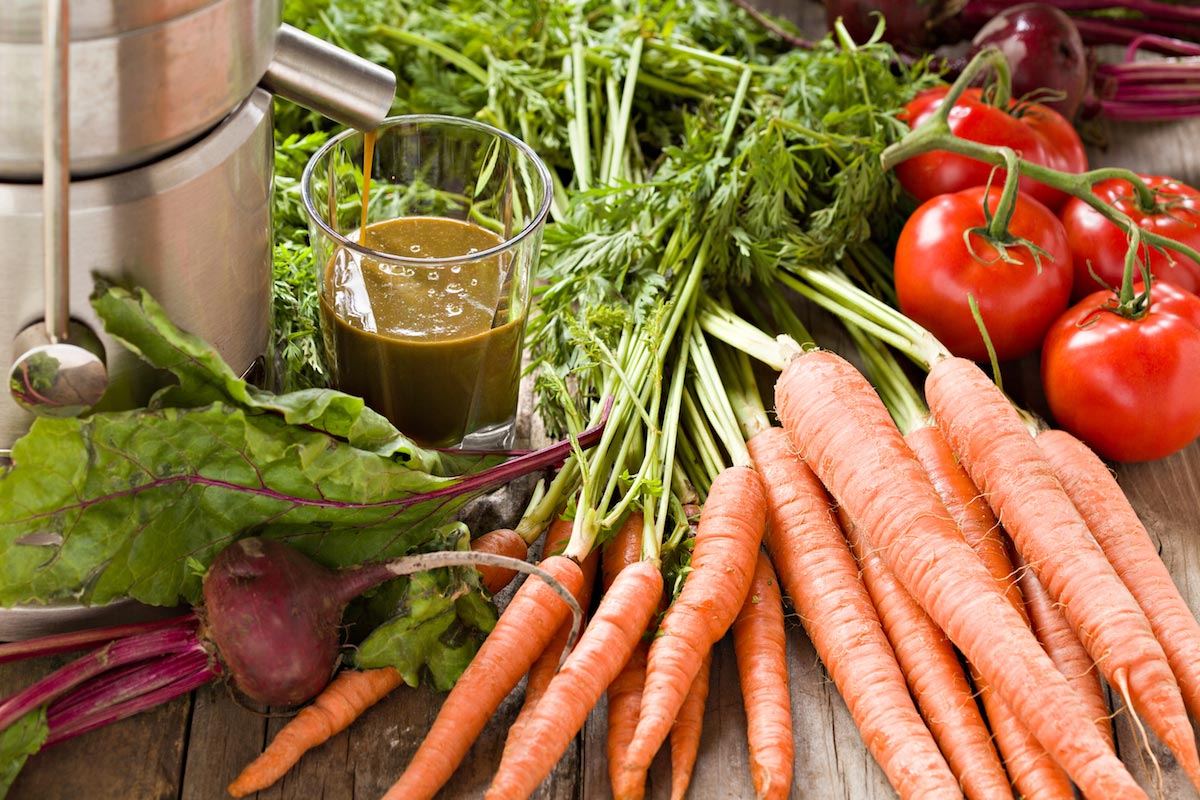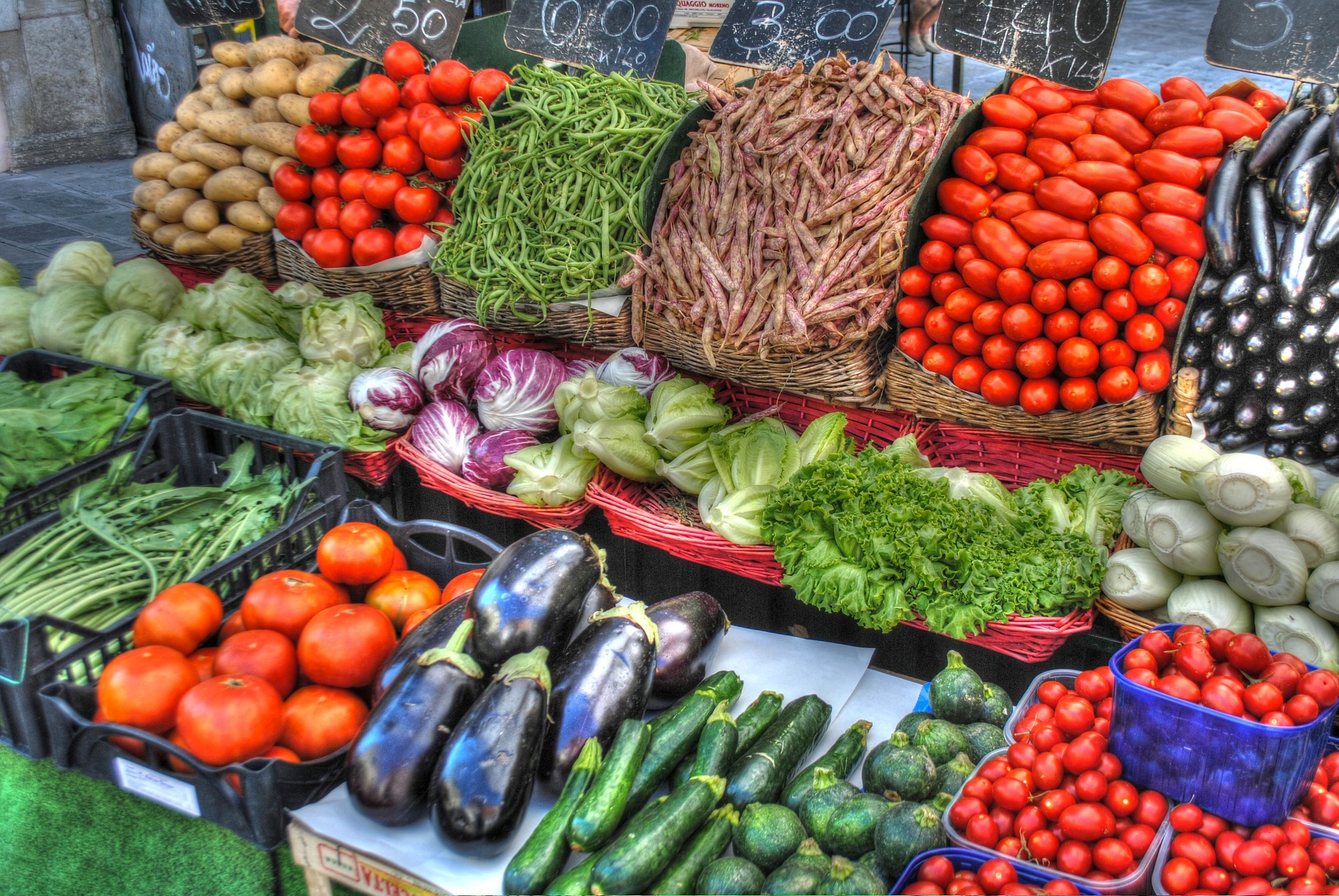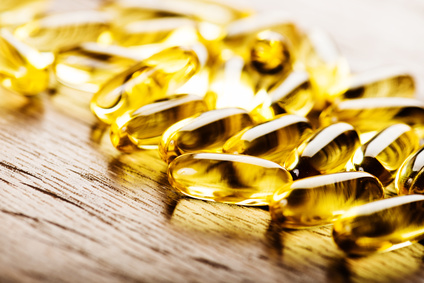Top 8 tasty and nutritious vegetables for juicing
04/20/2022 / By Zoey Sky

Juicing is a great way to improve your overall health, especially if you’re looking for a quick and convenient way to boost your nutrient intake. But if you’re new to juicing, it can be rather difficult to choose which vegetables to use when making a green juice.
Below are eight of the most nutritious vegetables that you can use to make a refreshing green juice.
Beets
The most common beets are royal maroon, but you can also find white or yellow beets. The beetroot is the taproot of the beet plant, and it offers many health benefits when juiced.
Beets are full of nutrients like folate and manganese. They’re also rich in nitrates that can help boost brain health, athletic performance and blood pressure.
In a 2019 randomized controlled trial published in the journal Nutrients, researchers observed the results of acute supplementation with nitrate-rich beet juice in 13 younger and 11 older adults. The volunteers consumed 150 milliliters of beetroot juice before walking for 30 minutes on a treadmill.
According to the results, both groups showed improvements. However, there were significant reductions in diastolic blood pressure among older adults.
These findings suggest that acute beetroot supplementation could help boost cardiovascular health in older adults.
Aside from the taproot of beets, you can also juice the leafy greens or beet greens, which are also full of many beneficial nutrients.
Broccoli
Broccoli is a superfood powerhouse. This cruciferous vegetable is full of antioxidants and various nutrients, such as potassium and vitamins A, B6 and C. Additionally, broccoli contains kaempferol, a flavonoid antioxidant that helps neutralize free radicals and prevent diseases linked to inflammation.
Data from a study published in the journal Frontiers in Pharmacology revealed that kaempferol has neuroprotective properties that can help combat conditions like Alzheimer’s disease, anxiety disorders, glioblastoma, neuropathic pain and Parkinson’s disease. The flavonoid promotes a beneficial anti-inflammatory and antioxidant effect.
Reap these neuroprotective benefits by adding broccoli to your green juice. (Related: Quench your thirst in the healthiest way possible by juicing these 9 vegetables.)
Cabbage
Cabbage is a hydrating vegetable and it contains many essential nutrients like folate, manganese, and vitamins B6, C and K.
Classified as a cruciferous vegetable, a 2020 study published in Frontiers in Nutrition has found that cabbage can help reduce the risk of inflammation, diabetes and heart disease.
Carrots
Carrots are low-calorie and naturally sweet. They’re also full of nutrients like biotin, potassium and vitamin A.
Carrots are popular for their high carotenoid content, which includes alpha-carotene, beta-carotene, lycopene and lutein. Data from a 2021 review published in the European Journal of Medicinal Chemistry revealed that these compounds act as antioxidants in your body and help reduce oxidative stress.
Carotenoids in carrots also help reduce your risk of certain cancers, diabetes, eye disease and heart disease.
Add carrots if you prefer veggie juice that’s naturally sweet and not too saccharine. Carrot also complements other juiced fruits and vegetables like beets, citrus and ginger.
Kale
Kale is low-calorie but nutritious and it contains vitamins A, B6, C and K, along with calcium and potassium. Another cruciferous vegetable, kale is also a good source of the minerals copper and manganese.
But keep in mind that kale also contains goitrogens, which are naturally occurring substances. These “anti-nutrients” can block iodine from entering the thyroid gland. Iodine is a trace mineral that helps your body make thyroid hormones that promote normal metabolism.
A deficiency of iodine can cause goiter or the enlargement of the thyroid.
Raw kale contains the important antioxidant beta-carotene, which helps neutralize harmful free radicals that increase your risk of developing chronic conditions like heart disease.
Spinach
Spinach is a leafy green vegetable full of beneficial antioxidants like kaempferol, lutein and quercetin. It’s also rich in vitamins A and C, along with nitrates that help boost your heart health.
In a 2015 randomized controlled trial, researchers studied the effect of spinach, a source rich in nitrates, on arterial stiffness and related hemodynamic measures in 27 healthy adult participants.
The volunteers consumed spinach for seven days. Findings revealed that there was a significant reduction in systolic and diastolic blood pressure. The study was published in the journal Clinical Nutrition Research.
Tomatoes
Often used as a vegetable, tomatoes are scientifically considered the fruit of the tomato plant.
Tomatoes are a kitchen staple and they’re often used to make hearty sauces and soups. Tomatoes are also full of nutrients such as folate, potassium and vitamin C.
Wheatgrass
Grass doesn’t sound appetizing, but adding wheatgrass to green juice gives your beverage an amazing nutrient boost. Wheatgrass is a nutrient-dense edible grass that’s also considered a vegetable.
This superfood contains nutrients like copper, iron, magnesium, phosphorus and 17 different amino acids.
According to a 2014 study published in the journal Natural Product Research, methyl phophorbide a (MPa) presents antioxidative and anticancer activity when isolated from the ethanol extract of the wheatgrass plant. Researchers reported that their findings prove that wheatgrass can be used to treat cancers, iron-overloaded disorders and oxidative stress.
For a nutritional boost, replace espresso with a shot of wheatgrass. You can also add wheatgrass to almost any juice recipe.
Delicious fruit and vegetable juice pairings to try
Here are some thirst-quenching, nutritious and tasty fruit and veggie pairing suggestions for your next glass of green juice:
- Apple, bitter gourd and lemon
- Avocado, celery, cucumber and lemon
- Avocado and papaya
- Carrot and sugarcane
- Cherry, dragonfruit and mango
- Cucumber, kale and pear
- Lemon, papaya and pineapple
- Starfruit and strawberries
How does juicing improve your diet?
According to a review published in the journal Nutrients, regular consumption of at least 500 milliliters of fruit juices daily can help improve vascular function and reduce blood pressure, as revealed in short- to medium-term studies.
In another 2021 study published in ACS Food and Technology, researchers discovered that juicing techniques could influence the antioxidant and phytochemical content of vegetable juices. Compared to high speeds, juicing at low speed helps preserve more of these beneficial compounds in the vegetable juice due to less introduction of heat.
Low speeds also help preserve both fiber and pulp, which is crucial for healthy digestion.
Watch the video below to learn about the six health benefits of drinking beet juice daily.
This video is from the Natural Remedies channel on Brighteon.com.
More related stories:
Boost your immune system with these 5 natural remedies.
9 Healthy reasons to make cabbage juice.
What you need to know about juicing cruciferous vegetables.
Put some protein in your smoothie with these 5 vegetables.
Sources include:
Submit a correction >>
Tagged Under:
food cures, food is medicine, Fresh, functional food, green juice, juicing, natural cures, natural ingredients, natural medicine, nutrients, nutrition, organics, vegetable juice, veggie
This article may contain statements that reflect the opinion of the author
RECENT NEWS & ARTICLES
COPYRIGHT © 2017 NATURAL HEALTH NEWS




















